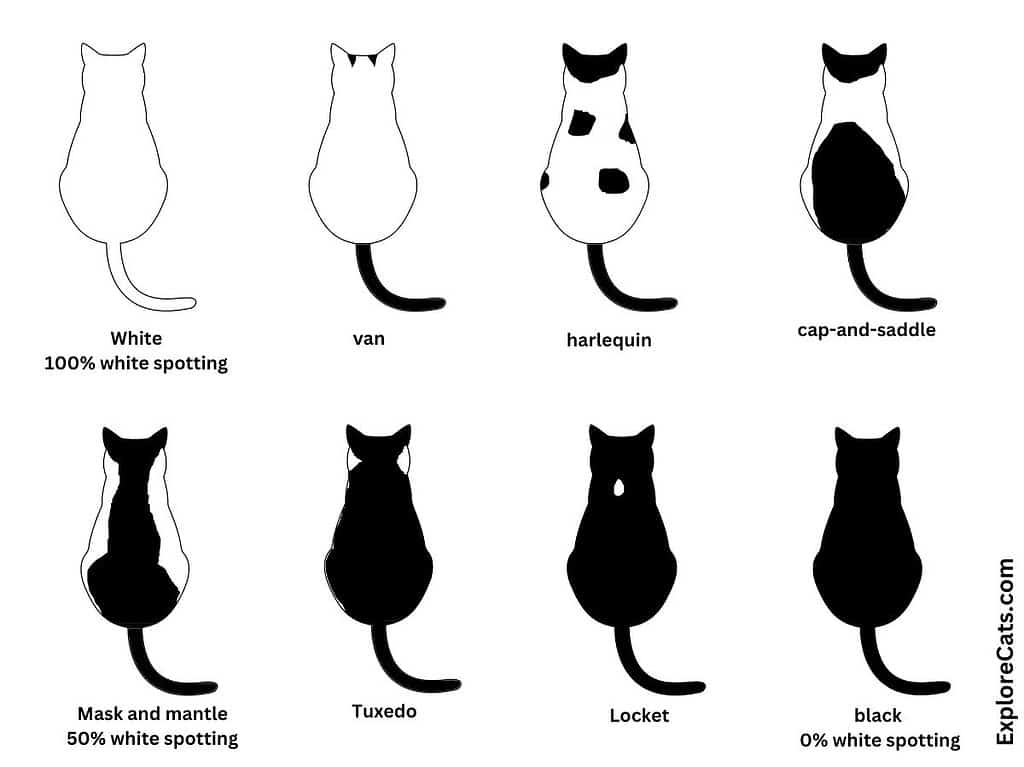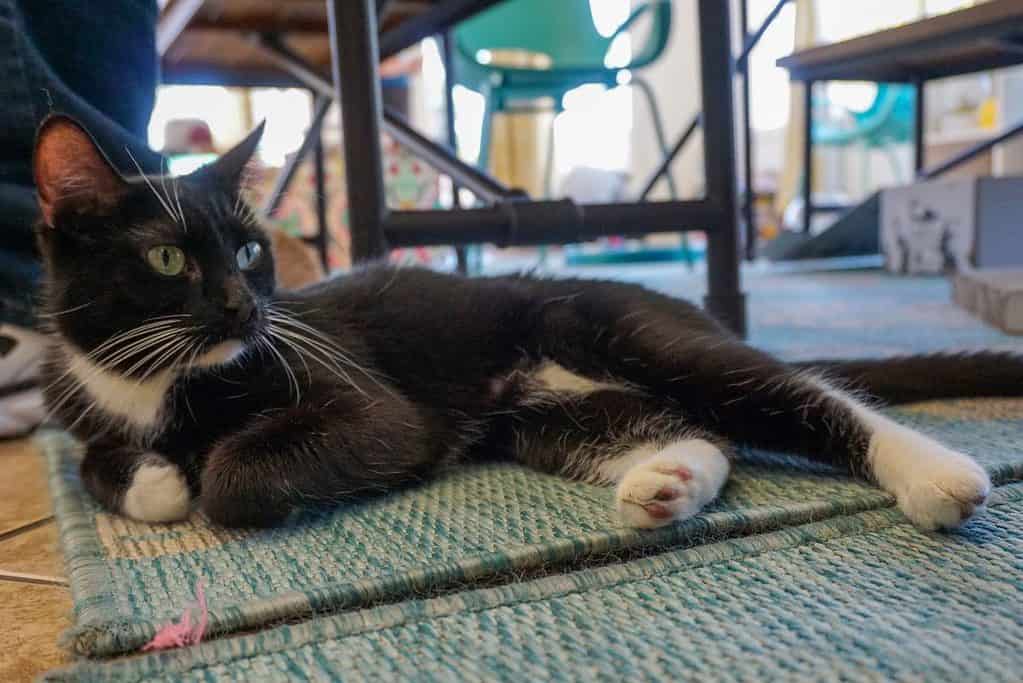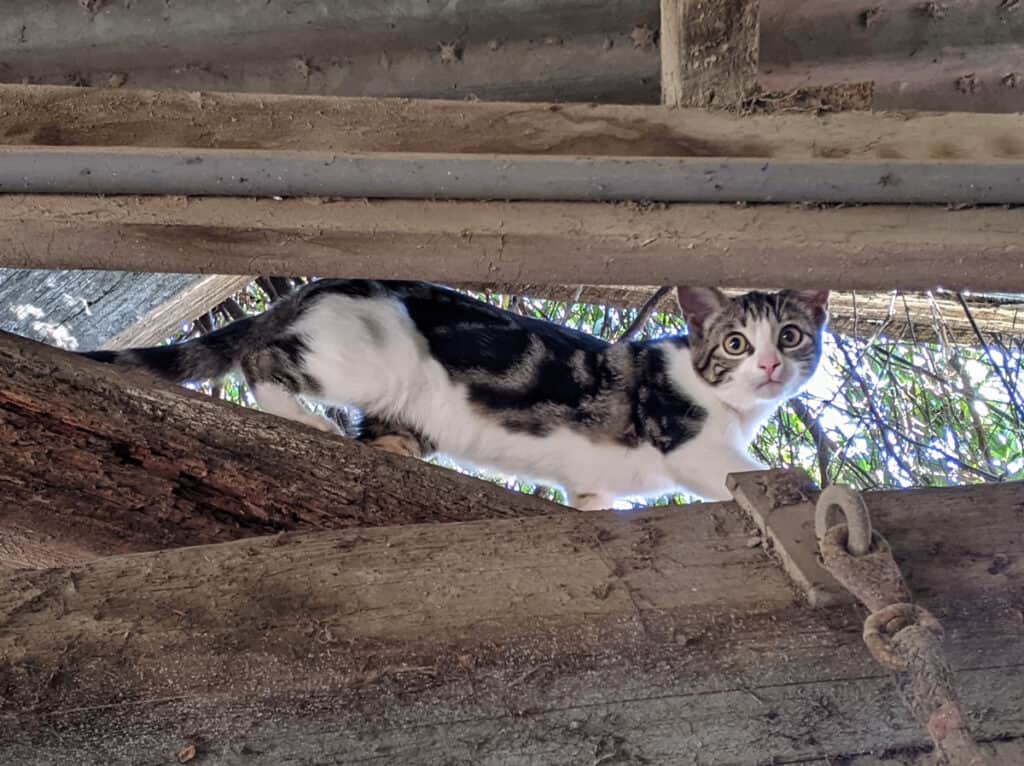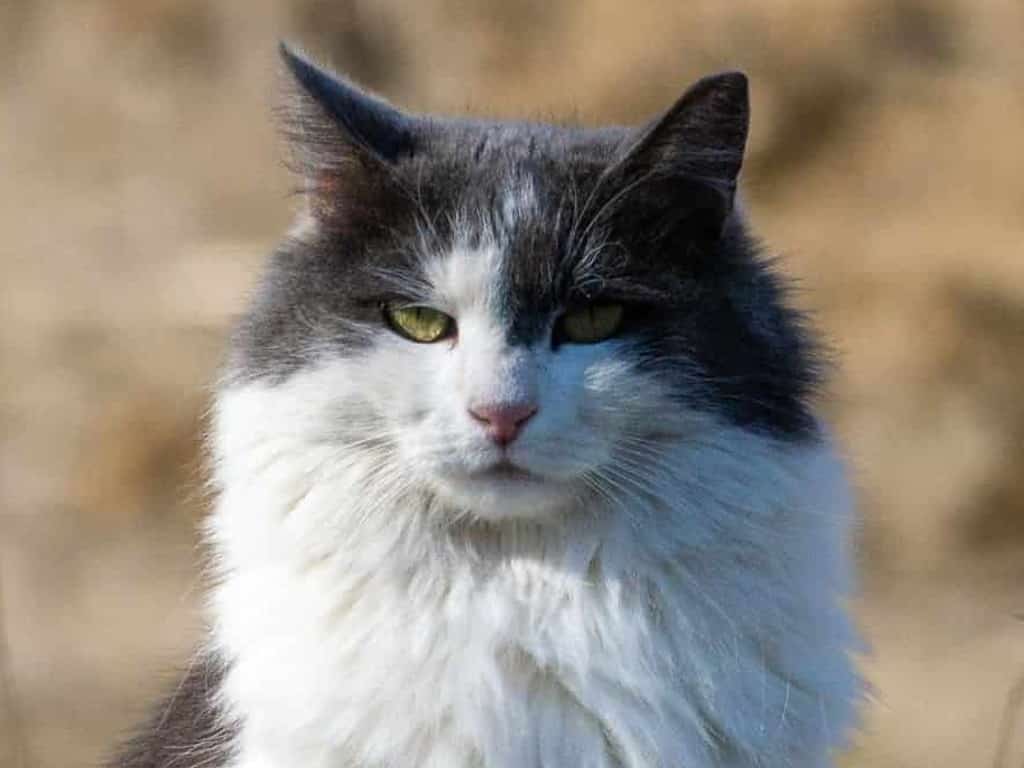Bicolor cats are cats whose fur coat color consists of a combination of two colors. The first color is most commonly white with an additional color. This second color could be black, orange, red, grey, or brown. The prefix “bi” stems from the Latin and means “two”.
What makes some cats bicolor?
The bicolor pattern on cats is a result of the expression of the piebald or white spotting gene, which inhibits pigmentation in certain fur areas, leaving them white. The intensity and distribution of white patches can vary significantly, ranging from minimal white spots to almost entirely white coats.
The piebald gene is an example of incomplete dominance in genetics. Cats inheriting just one copy of this gene from either parent can exhibit a bicolor pattern. However, the exact distribution of white is unpredictable, making each bicolor cat unique. This gene doesn’t create new colors but instead restricts the development of color in specific areas.

Fur patterns of bicolor cats
The fur patterns of bicolor cats is quite varied. Some cats are almost all white with just a patch or two of another color. On the other end of the spectrum, some cats are mostly a non-white color with just a very small patch of white, typically on the chest (known as a locket) or just at the tips of the paws and tail.

Classic bicolor fur patterns include tuxedo, Van, and Harlequin. The tuxedo pattern, characterized by a predominantly black coat with white paws, chest, and belly, is among the most recognized. In contrast, Van-patterned cats are mostly white with color confined to the head and tail. Harlequin cats display more extensive white areas with few colored patches.
Types of bicolor fur patterns
Here’s a list of the different bicolor coat patterns and their explanations:
- Tuxedo
- Appearance: Black with white paws, chest, and belly, resembling a formal tuxedo outfit.
- Distinctive Feature: Often includes a white facial marking, sometimes resembling a mask.

- Van
- Appearance: Mostly white with color on the head and tail only.
- Distinctive Feature: Named after the Turkish Van cat, this pattern is known for its limited colored areas.
- Harlequin
- Appearance: Primarily white with random colored patches.
- Distinctive Feature: The colored patches are usually large and few, giving a splashed appearance.
- Cap and Saddle
- Appearance: A colored ‘cap’ on the head and a ‘saddle’ on the back, with the rest of the body white.
- Distinctive Feature: The ‘saddle’ may extend along the cat’s back and sides.

- Bicolor (Standard)
- Appearance: Half-colored and half-white, but not in a specific pattern.
- Distinctive Feature: Random distribution of color and white areas.
- Mitted
- Appearance: Colored body with white ‘mittens’ on the paws, a white chin, and a white belly stripe.
- Distinctive Feature: The ‘mittens’ on the front paws are a key characteristic.
- Cow
- Appearance: Similar to the Holstein cow, with irregular black and white patches.
- Distinctive Feature: The patches are more evenly distributed compared to Harlequin.

- Mask-and-Mantle
- Appearance: A colored ‘mask’ over the head with a ‘mantle’ of color over the back.
- Distinctive Feature: Resembles a superhero mask and cape, with the sides and belly predominantly white.
- Bicolor with Spots
- Appearance: White base with distinct colored spots or patches.
- Distinctive Feature: The spots are usually round and well-defined.
Each bicolor pattern is a result of the unique genetic interplay in feline coat coloration. These patterns are not breed-specific but can occur in various cat breeds. The distribution and size of the colored and white areas can vary greatly, even among cats with the same general pattern.







